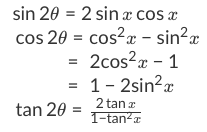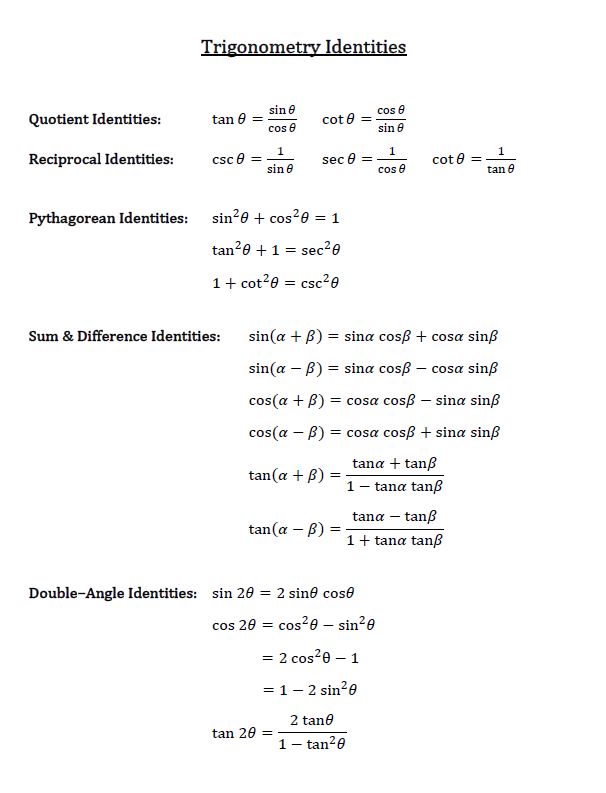Using double angle identities in trigonometry
Identities in math shows us equations that are always true. There are many trigonometric identities (Download the Trigonometry identities chart here ), but today we will be focusing on double angle identities, which are named due to the fact that they involve trig functions of double angles such as sin, cos2, and tan2. It's hard to simplify complex trigonometric functions without these formulas.
How to use double angle identities Firstly, what are double angle identities? Let's take a look at the trigonometry identity chart here:

For now, let's take a look at some double angle identities examples. Using the above trig identities cheat sheet, we can go through this trigonometric identities tutorial:

If you look at the trigonometry identity chart, you won't find a number, followed by sine, then cosine—not in quotient identities, not in reciprocal identities, not in Pythagorean identities, and not in sum and difference identities.

For both formulas we have a sine, cosine, which is nice. But the number in front is of our problems is 14, whereas in the double angle identity, the number in front is 2. What should be our next step? Multiply the whole expression by 7. That will give us 7(sin2). Multiplying this into the right side of the equation, we will get:

Let ? = 6x, which gives us:









